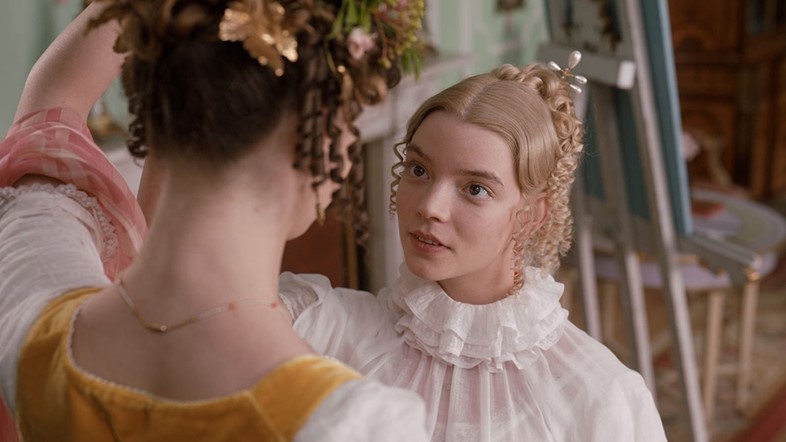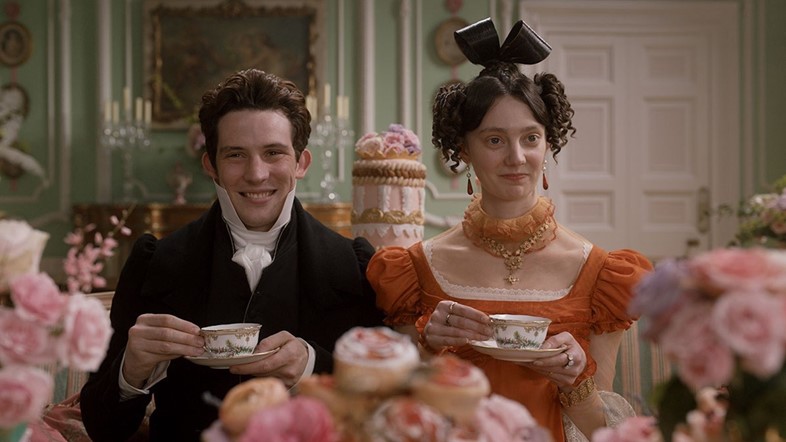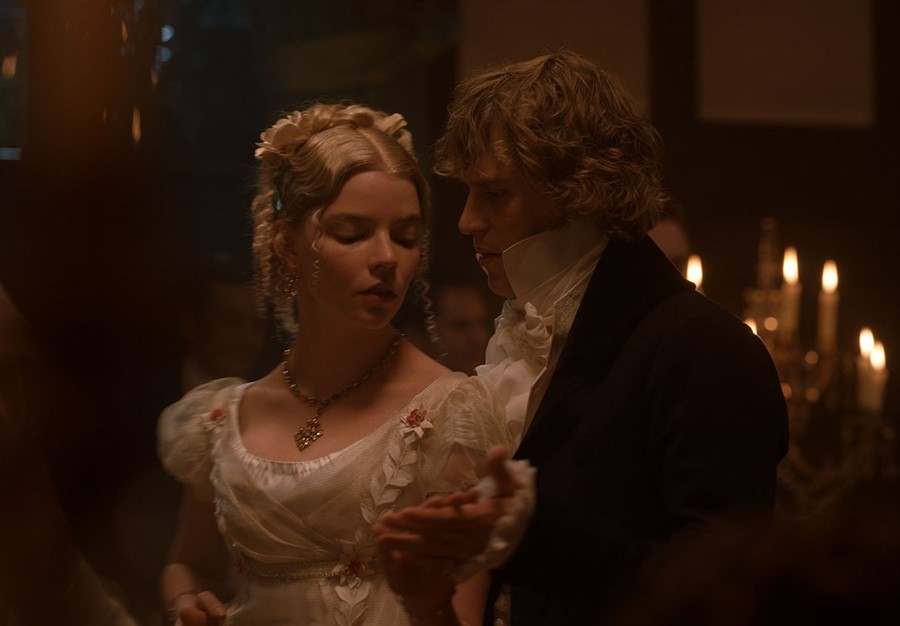The director of the 2020 iteration of Jane Austen’s Emma, Autumn de Wilde, tells Anna Cafolla about her adaptation and why she thinks the story has endured
Emma Woodhouse, one of Jane Austen’s most well-known protagonists, is a character the author famously described as one “whom no one but myself will much like”. Handsome and clever, but arrogant and borderline sadistic, she treats her friends like toys and meddles in their lives for her own pleasure, which often ends in disaster. Somehow, Emma is both insufferable and enchanting – still, the anti-heroine’s rocky road to romance has been revisited frequently, from the first onscreen adaption in 1948 to Amy Heckerling’s Clueless, which transplanted Emma to 90s California as Cher Horowitz. The 2020 Emma iteration returns Miss Woodhouse to England’s Regency era, and though probably one of the most faithful retellings in recent times, director Autumn de Wilde offers up a new perspective and modern parallels.
De Wilde’s Emma comes during a historical literary wave, where many cast a modern veil over classic stories – Greta Gerwig’s Little Women, Armando Iannucci’s The Personal History of David Copperfield, the Harrison Ford-starring The Call of the Wild. Watching the trailer for Emma recalls the punchy comedic beats of 2018’s The Favourite with its etiquette-breaking moments and acerbic snark that delighted contemporary audiences, and it would be easy to reference Sofia Coppola’s Marie Antoinette with its sugary colour palette and century-traversing themes of womanhood, sexuality, and female power. The youthful, exciting cast roster for Emma would also suggest a more modernised retelling – Anya Taylor-Joy as our hero and Mia Goth as innocent best friend Harriet Smith, historical drama stalwarts Johnny Flynn, Josh O’Connor, and Callum Turner – as well as Fleabag-scoring Isobel Waller-Bridge providing the soundtrack. De Wilde herself is well-known for her music video direction and cultural zeitgeist capturing photography, shooting Beck, Florence and the Machine, Deathcab for Cutie, among others.
And yet, De Wilde keeps a faithful heart to both Austen and her first literary iteration, with Man Booker Prize winner Eleanor Catton staying true to much of the original dialogue in the script, keeping the story chronologically smooth, with deep research dives into the music, fashion, and food of the Regency paying off onscreen.
“I didn’t care about modernising at all,” De Wilde tells me. “It was more about humanising the characters.” De Wilde directed her cast to watch the screwball comedies of the 30s, like Bringing Up Baby and His Girl Friday, and John Hughes’ bratpack movies, to bring out the sparkling comedy in stifling, heavily formalised social situations. “I realised how funny Austen was across my research, and I don’t think enough has been made of that before,” De Wilde shares, sitting opposite me in a hotel room in London’s Soho. “Women really weren’t supposed to be very witty or entertaining, but it is so rich in her writing and style. This was an opportunity to really highlight how you both navigate and kick back against those societal expectations.

“I think that’s why she wrote such great, badly behaving characters. Playing within the limitations of the novel’s language and etiquette was so fun for me – that singing was where a woman could really show her emotions, where dancing was one of the rare, exciting moments they could touch. I think it makes the growing romance in scenes with Emma and Knightley all the more electric.” Truly, the film’s most kinetic and delightful moments are when societal norms are performed with extravagant pomp, or stretched to their most taut. It’s in Emma’s comedically startled expression when Harriet eats a pastry from the afternoon spread, aghast that she would dare interfere in the carefully constructed tableau (you rarely see the upper classes eat across the movie, despite the luxurious meals), and when Knightley and Emma delicately touch hands and waists as they dance at the ball, a restrained, aching sexual tension.
Anya Taylor-Joy, the 23-year-old actor who shined in the slow, pulsating horror The Witch and full-throttle psych thriller Split, takes on the small and big screen’s twelfth version of Emma Woodhouse.
“It’s very exciting for my first film to be one of the most famous female anti-heroes,” explains De Wilde. “If I had made this movie ten years ago, I would have been forced to make her more likable. But I had the honour of bringing out the darkness in Emma, and Anya is such a smart actress.”
To do this as authentically and organically as possible, Taylor-Joy would give De Wilde three versions of the film’s important vignettes. For example, the scene where she insults Miss Bates on Boxhill – once where she genuinely doesn’t realise her actions, another where she’s more insolent, and in another she’s overcome with venom and callousness. “It didn’t feel right to decide some of these defining scenes for such a complicated character right then and there.”

She continues: “I think she has endured because we all see a bit of ourselves in the brightest and blackest of Emma’s character, not that we always care to admit it. No matter the time period, those light and dark moments feel universal.”
Though the lofty romances of Austen’s heroines remains one of the greatest Austenian appeals, De Wilde relates that Taylor-Joy and Goth, as Emma and Harriet, was “the biggest and most important love story” she wanted to champion.
“I want to see more movies where women’s dark, twisty, powerful relationships with each other are central. The first best friend is a true love – we called their fight the baby’s break up. These stories time travel. The world might be burning, it might be 1820 or 2020, but your best friend letting you down is totally stunting. These will always be important stories to tell, and I’m glad I get to do that.”
I ask if she too is experiencing the sugar rush I have across Emma’s press run – the reviewer screening lobby was filled with mountainous tiers of afternoon tea, decked with hulking slabs of Victoria sponge and sugar-dusted squares of shortbread. Today’s junket has a wall of herbal teas and chocolate-studded cookies piled high on china plates. While the enduring themes of sisterhood, sexuality, and social etiquette remain at the pulsating heart of Emma, the sensuous, pompous, and pastel-hued aesthetic bolsters the drama and comedy. De Wilde explains, with fervent passion and enthusiasm, the idiosyncratic relationship between the storytelling and the visuals, from the stunning filming location of Firle Place in East Sussex, to the sumptuous but untouchable food, and the high-drama fashion.
“I am a big fan of very intense periods of researching,” she explains. None of the cast wore underwear, as per the time – so we get shots of Knightley’s bare buttocks, the first, very deliberate nude scene of the film done by a man, as he is dressed by staff.
“All the colours and styling come from a true historical source, but I tend to exaggerate and heighten the worlds. Honestly though, I didn’t have to heighten that much, it was a crazy time in fashion.” Radical social change was taking place across Europe, and it reflected in the style – the rigidity of corsets, voluminous, classical-inspired clothing, and the brocade and lace of the waning Georgian era gave way to floaty, diaphanous fabrics and raised back waists. De Wilde, with costume designer Alexandra Byrne and production designers Kave Quinn and Marese Langan, pored over the era’s fashion magazines and artistic caricatures for inspiration. “Caricatures were especially great,” adds De Wilde, “especially for when we wanted to poke fun at the powerful who tried so hard with their fashion. There is so much comedy in fashion!”
Waller-Bridge’s choral score punctuates the film dramatically, and the soundtrack deftly traverses the class divides that track across Emma – the Irish and Scottish folk songs that reflect Harriet’s simpler world, the bulbous classical symphonies during Emma’s meddlesome moments, and the clipped, painfully polite piano recitals where it’s rude among upperclassmen to clap. “For me, I was fascinated that women of the time could only really articulate their strongest feelings through song together,” says De Wilde. “You see in the drawing room performances – the songs are so lovesick, but no one actually speaks to each other that way. The music in Emma’s society can be really beautiful, but it’s also stagnant in away. It’s not the wild, free folk songs we hear outside the big, beautiful houses.”
In recent years we’ve also seen the re-evaluation of romantic comedy. We have devoured the nostalgia and the comfort offered up to us on a neatly formulaic platter, but had rarely examined the true power of the genre for asking hard questions of society and the relationships we keep. “I think romantic comedies are one of the hardest forms. Like I said, the world is on fire, and we need a couple of hours off sometimes to strengthen up, live out another fantasy. I love a high-school movie, a sci-fi – cast me off to Middle Earth any day,” laughs De Wilde. “We need these romantic adventures, but we also need stories that challenge how we see ourselves, how we treat people, and how we can be right or wrong.
“Emma is a rom-com, but it’s also a satire of a stodgy class system, and a fantasy where you have to do the graft with a heroine you might not like very much to begin with, but you grow to love her as she transforms, and you ultimately want her to win.”
Emma is out in cinemas across the UK now.
